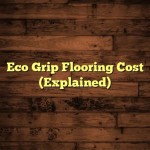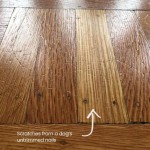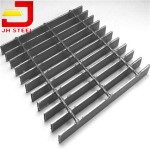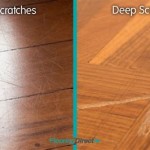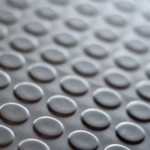Luxury Vinyl Plank Flooring: Achieving the Tile Look
Luxury Vinyl Plank (LVP) flooring has revolutionized the flooring industry, offering a versatile and cost-effective alternative to traditional materials like hardwood, stone, and tile. A significant innovation within the LVP category is its ability to realistically mimic the appearance of ceramic and porcelain tile. This article explores the various facets of LVP tile-look flooring, examining its benefits, design options, installation considerations, and maintenance requirements.
The demand for flooring that combines aesthetic appeal with practical advantages has spurred the development of sophisticated LVP technology. LVP tile-look flooring replicates the intricate patterns, textures, and color variations inherent in natural tile, providing homeowners and businesses with a durable and visually appealing surface. This replication is achieved through advanced printing techniques and embossing processes, resulting in a product that is often indistinguishable from genuine tile upon initial inspection.
LVP tile-look flooring is composed of multiple layers that contribute to its overall performance. A typical LVP plank consists of a wear layer, a decorative print layer, a core layer, and a backing layer. The wear layer, typically made of a clear urethane coating, protects the floor from scratches, stains, and everyday wear and tear. The decorative layer features a high-resolution image of tile, meticulously reproduced to capture the nuances of natural stone or ceramic. The core layer provides stability and water resistance, preventing warping and buckling. The backing layer provides additional cushioning and sound absorption.
The integration of these layers results in a flooring material that offers numerous advantages over traditional tile, making it a popular choice for various applications, from residential kitchens and bathrooms to commercial retail spaces and offices.
Key Advantages of LVP Tile-Look Flooring
LVP tile-look flooring offers a compelling combination of advantages that make it an attractive option for both residential and commercial installations. These advantages stem from its construction, material properties, and manufacturing process.
One of the most significant benefits is its enhanced durability. Unlike ceramic or porcelain tile, which can be prone to cracking or chipping under impact, LVP is more resilient and can withstand heavy foot traffic and accidental drops. The wear layer protects the decorative print layer from abrasion, ensuring that the floor maintains its appearance for an extended period.
Water resistance is another crucial advantage, particularly in areas prone to moisture exposure, such as bathrooms, kitchens, and basements. LVP is inherently waterproof, preventing water from seeping into the subfloor and causing mold or mildew growth. This makes it a more hygienic and durable option compared to traditional tile, which can be susceptible to water damage if not properly sealed and maintained.
Furthermore, LVP offers a more comfortable underfoot feel compared to hard tile surfaces. The resilient core layer provides a slight cushioning effect, reducing fatigue and making it more pleasant to stand on for extended periods. This is especially beneficial in kitchens and other areas where people spend a significant amount of time standing.
The ease of installation is also a major draw for many homeowners and contractors. LVP is typically installed using a click-lock system, which allows for a floating installation that does not require grout or mortar. This simplifies the installation process and reduces the time and labor costs associated with traditional tile installation.
Finally, LVP tile-look flooring is often more cost-effective than natural tile. While the initial cost of LVP may be comparable to some types of tile, the reduced installation costs and lower maintenance requirements can result in significant long-term savings.
Design Options and Aesthetic Versatility
The aesthetic versatility of LVP tile-look flooring is a significant factor in its popularity. It can be manufactured to replicate a wide range of tile styles, colors, and textures, allowing for diverse design possibilities.
LVP can mimic the appearance of natural stone, such as marble, travertine, and slate. These stone-look LVP options offer the elegance and sophistication of natural stone without the high cost and maintenance requirements. They can be used to create a luxurious and upscale look in bathrooms, entryways, and living areas.
The replication of ceramic and porcelain tile is another common application. LVP can be designed to resemble traditional square or rectangular tiles, as well as more intricate mosaic patterns. The color options are virtually limitless, ranging from classic neutrals to bold and vibrant hues. This allows for the creation of custom designs that complement any décor style.
Beyond the replication of existing tile styles, LVP can also be used to create unique and innovative designs. Manufacturers can incorporate custom patterns and textures into the decorative layer, allowing for the creation of one-of-a-kind flooring solutions. This level of customization is not typically available with traditional tile.
The size and shape of LVP planks can also be varied to create different visual effects. Larger planks can mimic the look of large-format tiles, while smaller planks can be used to create intricate patterns and borders. Rectangular planks can be laid in various configurations, such as brick patterns or herringbone patterns, to add visual interest to a space.
Furthermore, the embossing process used in the manufacturing of LVP allows for the creation of textured surfaces that closely resemble the feel of natural tile. This adds another layer of realism to the flooring and enhances its overall aesthetic appeal.
Installation and Maintenance Considerations
While LVP tile-look flooring offers a relatively straightforward installation process, there are several considerations that should be taken into account to ensure a successful and long-lasting result.
Proper subfloor preparation is crucial. The subfloor must be clean, level, and dry before installing LVP. Any imperfections in the subfloor can telegraph through the LVP and create an uneven surface. Self-leveling compounds may be required to correct any unevenness.
Acclimation of the LVP planks is also important. Allowing the planks to acclimate to the room's temperature and humidity for at least 48 hours before installation can help prevent expansion and contraction issues after installation. This is particularly important in areas with significant temperature or humidity fluctuations.
The click-lock system used in most LVP installations is designed for ease of use, but it is important to follow the manufacturer's instructions carefully. Incorrectly locking the planks together can result in gaps or uneven seams. It is also important to use the appropriate tools for cutting and trimming the planks.
Once installed, LVP tile-look flooring is relatively easy to maintain. Regular sweeping or vacuuming is sufficient to remove dirt and debris. For more thorough cleaning, a damp mop and a mild detergent can be used. Avoid using abrasive cleaners or harsh chemicals, as these can damage the wear layer.
Protecting the flooring from excessive wear and tear is also important. Using area rugs in high-traffic areas can help prevent scratches and scuffs. Furniture pads should be used under the legs of chairs and tables to protect the floor from indentations. Promptly cleaning up spills can help prevent staining.
While LVP is waterproof, it is still important to address any leaks or water damage promptly to prevent potential problems. Regular inspection of the flooring can help identify any potential issues early on, allowing for timely repairs and preventing more extensive damage. LVP durability and low maintenance requirements contribute to its overall longevity and value, making it a practical choice for homeowners and businesses alike.

Luxury Vinyl Plank Tile Slaughterbeck Floors Campbell Ca

Luxury Vinyl Planks And Tiles Featuring Hermosa Stone Photos

5 Benefits Of Vinyl Plank Flooring Mannington

I Recently Put In Stone Slate Look Luxury Vinyl Tiles My Bathroom Tile Flooring Kitchen

Luxury Vinyl Planks And Tiles Featuring Hermosa Stone Photos

Luxury Vinyl Planks Lvp Southeastern Tile Connection

New Vinyl Plank Flooring Over Tile Table And Hearth

Pin On Luxury Vinyl Flooring

Porcelain Tile Or Vinyl Planks Which To Choose

Unbiased Luxury Vinyl Plank Flooring Review Cutesy Crafts

